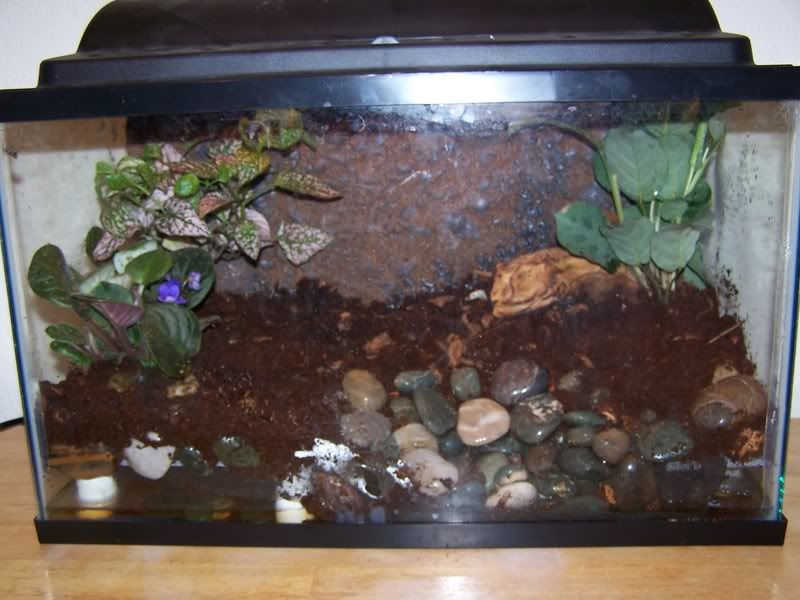In 12 days, we'll celebrate our second anniversary. In honor of it, I have decided to use my vacation hours. Speaking of days off, Columbus Day is a paid holiday! I love working at a bank.
The frog project is still in full swing. After having the waterfall set up for a couple of weeks, it started leaking and I tore the thing out. I put a new false bottom in, and replanted everything. There's a little pond in the front of the tank. I'll have to buy some new gravel or buy some duckweed to make the rocks look a bit less out of place.

I have yet to pick the kind of frog that's going to live there... There's a project that's located in Peru called INIBICO that is quite phenomenal. Regardless of what frog I pick, I truly hope to be able to support this group and their cause.
Over the past 8 years, there has been an interest to farm raise dart-frogs in Peru and export these frogs the world over. The impetus for this project was experiments and data that Dr. Rainer Shulte had compiled over the last 10 years. Specifically, Rainer has shown that by providing artificial breeding sites in the natural habitat of dart-frogs that these frogs could increase their populations in the wild. Rainer felt if land owners in Peru were paid to keep their land intact and not sell the land to cattle ranchers and the timber industry, the natural habitat and the fauna and flora within could be preserved.
The vision was to provide artificial breeding sites in Dendrobatid habitats and harvest a percentage of the tadpoles. The tadpoles then would be raised in captivity in Peru. The metamorphosed frogs would then be exported around the world to institutions and hobbyists. The proceeds would pay the land owners and employee indigenous people. Overall, land would be preserved and the frogs would be "protected" while employing native people.
Click here to read more about it.

No comments:
Post a Comment